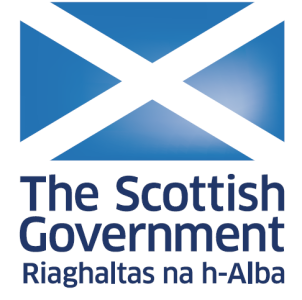Graduate Outcomes 2020/21: Summary Statistics - Activities by previous study characteristics
- Summary
- Graduate activities and characteristics
- Activities by previous study characteristics
- Graduate salaries and work locations
- Graduate reflections on activities
- Notes
How do the activities of first degree graduates vary by their class of degree?
The 2019/20 academic year saw the implementation of Higher Education Classification of Subjects (HECoS) and the Common Aggregation Hierarchy (CAH). The HECoS classification replaces JACS, used in previous years, with CAH serving as a means to connect HECoS and JACS. For more information, refer to HESA's webpage on HECoS and CAH. See the notes to the Higher Education Student Statistics 2020/21 statistical bulletin for more detail around previous analysis undertaken.
Further work is ongoing to assess the suitability of the CAH to enable time series analysis of subject data. Until that work is complete, we have reached the conclusion that we cannot confidently present subject time series comparisons that span the change in subject coding frames.
As a result, tables and charts containing detail on graduates’ subjects have been limited to 2019/20 and 2020/21 data only. Data containing 2017/18 and 2018/19 which utilises the JACS coding frame can be found in the Graduate Outcomes archive.
Figure 9 shows:
- The percentage of first degree graduates in full-time employment increased from 54% in the survey of 2019/20 graduates to 58% among 2020/21 graduates, while the percentage in unemployment dropped from 7% to 5%.
- Among 2020/21 first degree graduates, the proportion in full-time employment was highest among those who achieved a first class honours degree (59%).
- The proportion in part-time employment was highest among those who obtained a third class honours/pass (15%) and lowest (9%) among those who obtained a first class honours.
- Unemployment was highest for first degree graduates who obtained a third class honours/pass.
- The proportion of first degree graduates in further study (including employment and further study) has decreased by 3 percentage points relative to 2019/20.
Figure 9 - Graduate activity by classification of first degree
Academic years 2017/18 to 2020/21
Reset filters | Download chart data (csv) | Download source data (csv) | About SB266 Figure 9
How do the activities of graduates vary by the subjects they studied?
Figure 10 shows:
- A higher proportion of graduates who studied science subjects were in full-time employment or full-time study than those who had studied non-science subjects.
- The proportion of graduates in 2020/21 who were in full-time employment and had studied non-science subjects has increased by 5 percentage points relative to 2019/20.
- Graduates who studied physical sciences or biological and sport sciences were more likely to go into full-time further study than those who studied other subjects at 18% and 14% respectively.
- Among postgraduates in 2020/21, those who studied architecture, building and planning were most likely to be in full-time employment at 77%. In contrast, only half of postgraduates who studied historical, philosophical and religious studies and language and area studies were likely to be in full-time employment.
- There was a greater proportion of graduates who had studied architecture, building and planning and veterinary sciences in full-time employment (72% and 79% respectively) relative to all other subjects. Similarly, a higher proportion of graduates who studied computing were unemployed compared with all other subject areas.
The science grouping is an aggregation of CAH level 1 codes CAH01 through to CAH13 and CAH26 with the exception of CAH26-01-03 (Human geography). CAH26 (Geographical and environmental studies) has been disaggregated so that CAH26-01-03 (Human geography) is presented in the non-science grouping labelled as 'Geographical and environmental studies (social sciences)'. All other CAH level 3 codes within CAH26 are presented in the science grouping labelled as 'Geographical and environmental studies (natural sciences)'. This grouping of science subjects has been created by HESA.
Figure 10 - Graduate outcomes by subject area of degree and activity
Academic years 2019/20 to 2020/21
Show:
Reset filters | Reset sort | Download table (csv) | Download source data (csv) | About SB266 Figure 10
Figure 11 shows:
- Of those who studied science subjects and were working in the UK, 32% of undergraduates and 39% of postgraduates were employed in the human health and social work industry. A high proportion of these graduates studied medicine & dentistry and subjects allied to medicine (e.g. nursing).
- Over a fifth of biological and sport sciences graduates in UK work were in the education sector.
- Within non-science subjects, for both 2019/20 and 2020/21, the highest proportion of undergraduates and postgraduates went on to work in the education sector.
Combined and general studies is only used for students on courses which do not specify a subject specialism. The majority of students in the combined subject area study at The Open University.
The UK Standard Industrial Classification of Economic Activities (SIC) is used to classify industries by the type of activity they do. Graduates are asked what their employer makes or does. This information is coded using the SIC2007 coding frame. The codes are grouped together for publication. See Standard Industrial Classification: SIC2007 for the full list of codes and how they are grouped together.
Figure 11 - Standard industrial classification of graduates entering work in the UK by subject area of degree
Academic years 2019/20 to 2020/21
Show:
Figure 11 - Standard industrial classification of graduates entering work in the UK by subject area of degree
Academic years 2019/20 to 2020/21
Reset filters | Reset sort | Download table (csv) | Download source data (csv) | About SB266 Figure 11
Figure 11 - Standard industrial classification of graduates entering work in the UK by subject area of degree
Academic years 2019/20 to 2020/21
Reset filters | Reset sort | Download table (csv) | Download source data (csv) | About SB266 Figure 11
Figure 11 - Standard industrial classification of graduates entering work in the UK by subject area of degree
Academic years 2019/20 to 2020/21
Reset filters | Reset sort | Download table (csv) | Download source data (csv) | About SB266 Figure 11
Figure 11 - Standard industrial classification of graduates entering work in the UK by subject area of degree
Academic years 2019/20 to 2020/21
Reset filters | Reset sort | Download table (csv) | Download source data (csv) | About SB266 Figure 11
Figure 12 shows:
- Of 2020/21 graduates who were UK domiciled and in UK work that had studied science subjects, 83% were in high skilled occupations, while for graduates of non-science subjects, 73% were in high skilled occupations. For non-UK domiciled graduates in UK work that had studied science subjects, 87% were in high skilled occupations while for non-science subjects, 76% were in high skilled occupations.
- For non-science subjects, graduates who studied education and teaching saw the highest proportion of graduates in high skilled jobs. This is true for both UK domiciled and non-UK domiciled graduates.
- The proportion of UK domiciled graduates in low skilled occupations was greatest for those studying design, and creative and performing arts and agriculture, food and related studies, relative to all other subjects. For non-UK domiciled graduates those that studied design and creative and performing arts and language and area studies had the highest proportion in low skilled jobs.
The UK Standard Occupational Classification (SOC) system is used to classify workers by their occupations. Jobs are classified by their skill level and content. Graduates are asked what their job title is. This information is coded using the SOC2020 coding frame. The codes are grouped together for publication. See Standard Occupational Classification: SOC2020 for the full list of codes and how they are grouped together. Major groups 1 to 3 are grouped together as 'High skilled'. Major groups 4 to 6 are grouped together as 'Medium skilled' and 7 to 9 are grouped as 'Low skilled'.
Figure 12 - Standard occupational classification of graduates entering work in the UK by subject area of degree
Academic years 2019/20 to 2020/21
Show:
Figure 12 - Standard occupational classification of graduates entering work in the UK by subject area of degree
Academic years 2019/20 to 2020/21
Reset filters | Reset sort | Download table (csv) | Download source data (csv) | About SB266 Figure 12
Figure 12 - Standard occupational classification of graduates entering work in the UK by subject area of degree
Academic years 2019/20 to 2020/21
Reset filters | Reset sort | Download table (csv) | Download source data (csv) | About SB266 Figure 12
Figure 12 - Standard occupational classification of graduates entering work in the UK by subject area of degree
Academic years 2019/20 to 2020/21
Reset filters | Reset sort | Download table (csv) | Download source data (csv) | About SB266 Figure 12
Figure 12 - Standard occupational classification of graduates entering work in the UK by subject area of degree
Academic years 2019/20 to 2020/21
Reset filters | Reset sort | Download table (csv) | Download source data (csv) | About SB266 Figure 12
Release date
31 May 2023, 9:30
Coverage
UK
Release frequency
Annual
Themes
Children, education and skills
Issued by
HESA, 95 Promenade, Cheltenham, GL50 1HZ
Press enquiries
+44 (0) 1242 388 513 (option 6), [email protected]
Public enquiries
+44 (0) 1242 388 513 (option 2), [email protected]
Statistician
Luke Perrott
Pre-release access
View pre-release access list for this release
Graduate Outcomes open data repository
View detailed information by provider
User guide
View the Graduate Outcomes user guide





